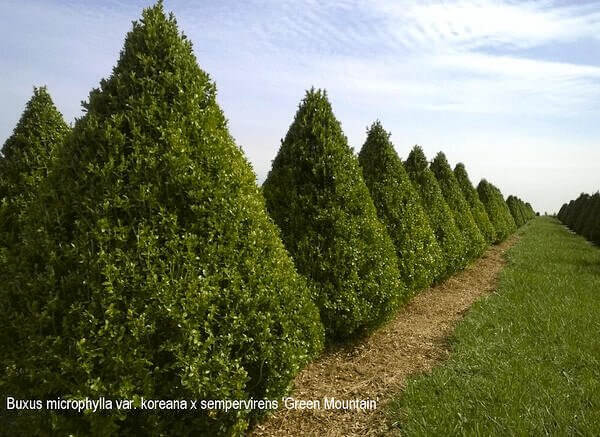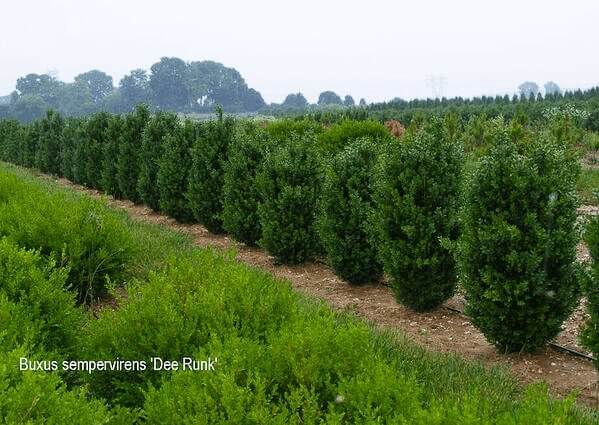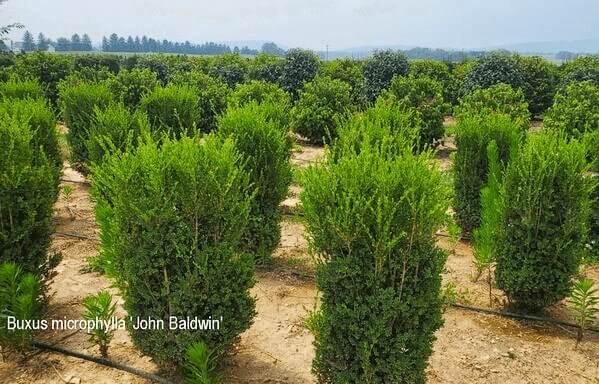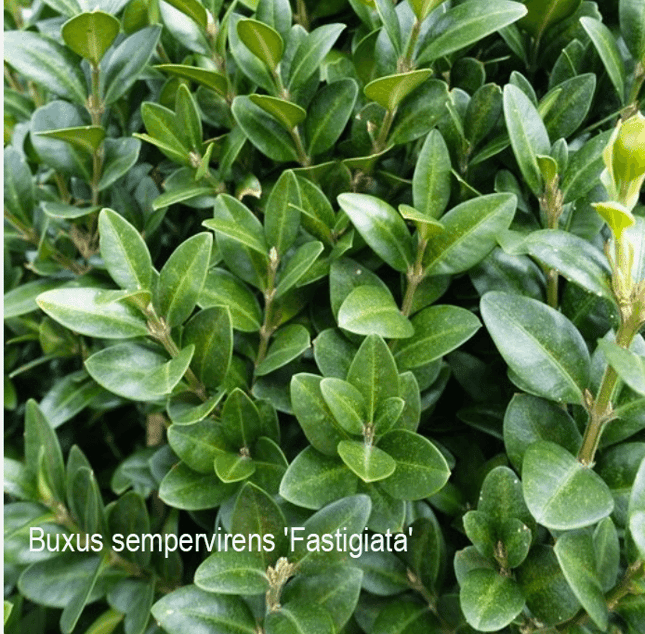Boxwood is versatile and useful, but some in the landscape industry are afraid to use it because of the recent scares around boxwood blight. Your customers may have questions about boxwood, or they may just be ordering what they think of as alternatives. Alternatives are out there, but there is more to the boxwood story...
Everybody Loves Boxwood - The Blight Not So Much
 Buxus is the number one selling ornamental in the U.S. We all love this plant - numbers don’t lie. It is so versatile: it is used for borders, hedges, and topiary. Most anything you can dream up, you can probably make it work with boxwood.
Buxus is the number one selling ornamental in the U.S. We all love this plant - numbers don’t lie. It is so versatile: it is used for borders, hedges, and topiary. Most anything you can dream up, you can probably make it work with boxwood.
One of the most important things to know about boxwood is that there is no boxwood native to North America. They were all originally imported as species plants and hybridized for marketability. That is: growth speed, color, and winter resistance.
In the U.S. there is a varietal sometimes referred to as American boxwood and it makes me smile because there is no American boxwood. This is actually Buxus sempervirens and it came from Europe with the first settlers. They brought Buxus sempervirens along with the cultivar Buxus sempervirens ‘Suffruticosa’. You often see that one in southern Virginia and farther south. They get big and pillowy and cloud shaped and very broad.
Here is the part where I burst that pillowy cloud to tell you that suffruticosa is the most susceptible to boxwood blight. The good news is that we are learning more every day about how to manage the blight.
Living with Boxwood Blight and Other Challenges
 We are learning to live with the blight just as they have done in Europe. They had it long before we did. The issue of blight comes and goes. Some years it is a bigger problem than others. When it first appeared in the US back in 2011 it reared up and took us by surprise. We didn’t know what it was, we didn’t see it coming, and we thought it was the end of boxwood. But it turns out not to be so.
We are learning to live with the blight just as they have done in Europe. They had it long before we did. The issue of blight comes and goes. Some years it is a bigger problem than others. When it first appeared in the US back in 2011 it reared up and took us by surprise. We didn’t know what it was, we didn’t see it coming, and we thought it was the end of boxwood. But it turns out not to be so.
Since then we have learned more and more about preventative care. There are fungicides that work well. If you have a valuable boxwood garden it’s worth investing in preventive care.
Beyond the blight, there are other diseases that come after your Buxus. There are leaf, root, and stem diseases. And don’t forget the boxwood leafminer. So why aren’t all of these problems top of mind? Because we’ve learned to live with them and manage them with proactive care. And the hits keep coming. One challenge on the horizon is the boxwood tree moth which may have arrived in the U.S.from Canada. Not the over-politeness we usually expect from Canada, but here we are.
So whether it’s Buxus or some other valuable plant resource in your care, you’ll want to buy from growers who walk the rows vigilantly and really take note of what they see in the field. We have to keep up to date on information coming from the extension to be ready for what’s next. It is early days for the tree moth. Meanwhile, you’ve still got to be vigilant about the blight because the spore can live up to seven years in the soil. Here at Waverly Farm, we’ve signed a Boxwood Blight Compliance Agreement (BBCA) with the Maryland Department of Agriculture.
Boxwood alternatives
 There are alternatives to boxwood that you can offer to customers who are concerned. One such option would be Ilex crenata. This has a small leaf, with density that from a distance looks like boxwood and provides a range of cultivars that are as slow growing as boxwood. Taxus is another plant now being subbed in for Buxus because of the boxwood scare.
There are alternatives to boxwood that you can offer to customers who are concerned. One such option would be Ilex crenata. This has a small leaf, with density that from a distance looks like boxwood and provides a range of cultivars that are as slow growing as boxwood. Taxus is another plant now being subbed in for Buxus because of the boxwood scare.
They are alternatives, but not great alternatives. We don’t think either ilex crenata or taxus is a great substitute for buxus. Taxus is basically deer food. And I. crenata does well until a severe winter. Then, you have to start over.
How about alternatives within the boxwood species? We grow several buxus cultivars which have shown no issues whatsoever: ‘Dee Runk’, Buxus fastigiata, ‘John Baldwin’, and ‘Green Mountain’ to name a few. This is just our experience, so take that with a grain of salt.
Still nervous about boxwood?
It’s a natural inclination to steer away from problems. If you or someone you know had a bad experience, you might be keen to find an “anything but boxwood” approach. And for growers, it’s an expensive, slow-growing plant that demands a significant investment of time and field space. So, if there is real concern about selling it, one may ask, why would I continue growing it? These concerns are understandable.
The bottom line for me is this: Fear of boxwood blight is not a valid reason for not investing in boxwood. It is, however, an excellent opportunity to ask questions about how Buxus is doing in your region and to be selective about the cultivars you choose to include in your planting plan. Alternatives are there, but not great. Proactive management is the best way to cope with boxwood blight challenges. It is a plant with too much value for its foundational role in landscape designs. My advice: manage, don’t avoid.
Reserving the plants you need for when you need them can be a real challenge. Download our ebook Solving Plant Shortages in a High Demand Landscaping Market to learn about practical solutions to common plant sourcing problems.





